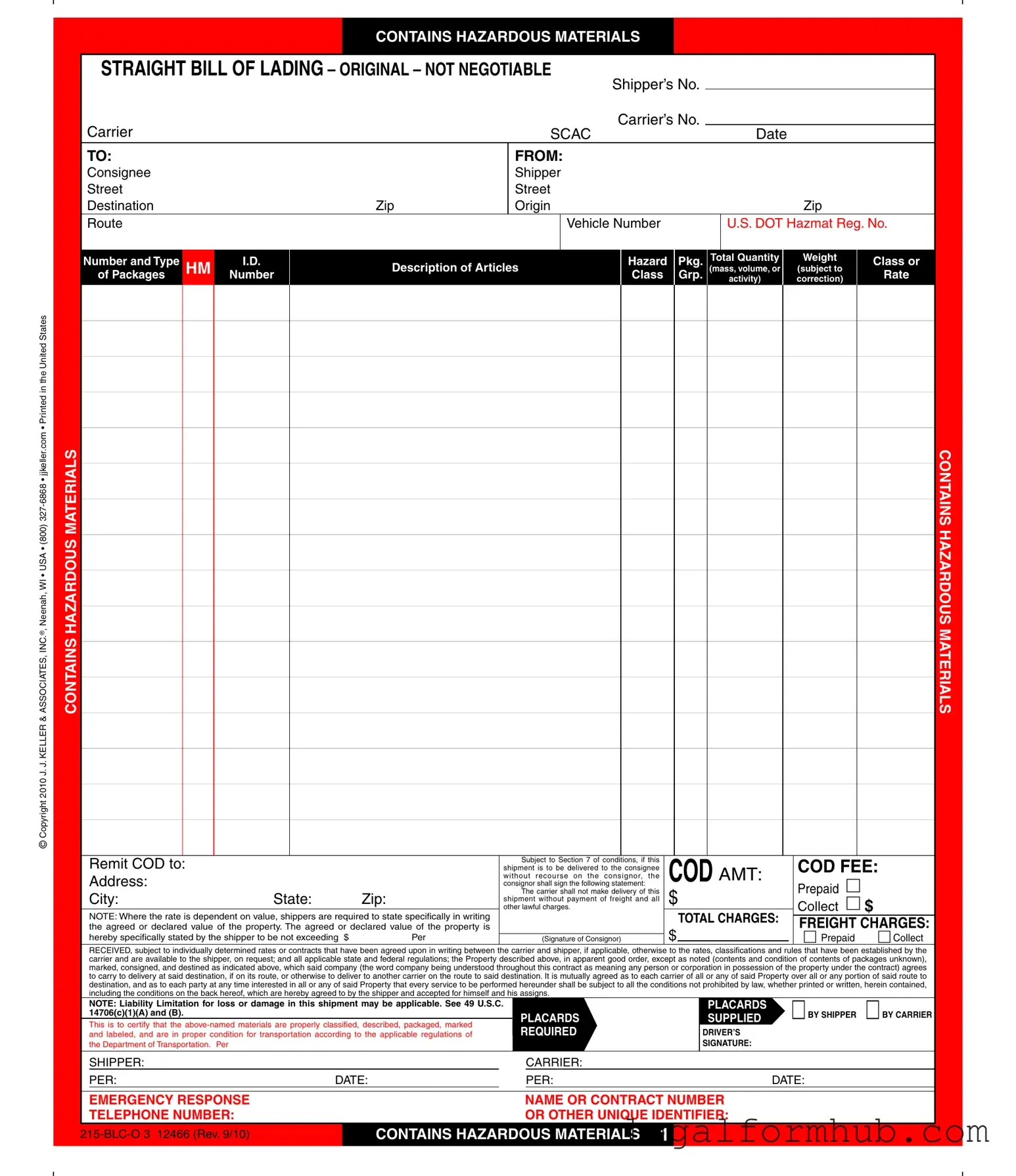The Uniform Commercial Code (UCC) Bill of Lading serves a similar purpose to the Hazard Bill of Lading. Both documents are used in the shipping industry to acknowledge the receipt of goods and outline the responsibilities of the shipper and carrier. The UCC Bill of Lading can be negotiable or non-negotiable, depending on the terms specified. Like the Hazard Bill, it includes details about the shipment, such as the description of goods and the agreed-upon value, but it may not specifically address hazardous materials.
The Air Waybill (AWB) is another document that parallels the Hazard Bill of Lading. This document is used for air freight shipments and serves as a contract between the shipper and the airline. It contains similar information, such as the shipper's and consignee's details, a description of the goods, and terms of transport. However, the AWB is typically non-negotiable and does not specifically cater to hazardous materials, although it may include special instructions for such items.
The Ocean Bill of Lading is also comparable to the Hazard Bill of Lading. This document is used for maritime shipping and functions as a receipt for cargo and a contract for transportation. It includes details about the shipper, consignee, and cargo description, much like the Hazard Bill. However, the Ocean Bill of Lading may have different liability limitations and regulations due to the nature of maritime law.
The Freight Bill is another document that shares similarities with the Hazard Bill of Lading. It serves as an invoice for the transportation services provided by the carrier. While it does not function as a contract of carriage, it includes essential details such as the shipment's weight, dimensions, and charges. Unlike the Hazard Bill, it does not typically include information about hazardous materials or specific liability clauses.
The Consignment Note is also akin to the Hazard Bill of Lading. This document is used to confirm the receipt of goods and outlines the terms of the shipment. It typically includes details about the sender, recipient, and the nature of the goods. However, it may not provide the same level of detail regarding hazardous materials or specific liability limitations as the Hazard Bill does.
The Delivery Order is another document that can be compared to the Hazard Bill of Lading. This document instructs a carrier to release goods to a designated party. While it may include information about the shipment, it does not serve as a contract of carriage like the Hazard Bill. Delivery Orders are often used in conjunction with other shipping documents, including the Hazard Bill, to ensure proper handling of the cargo.
The Packing List is similar to the Hazard Bill of Lading in that it provides detailed information about the contents of a shipment. It outlines the items being shipped, their quantities, and packaging details. However, unlike the Hazard Bill, it does not serve as a contract or receipt for transportation and does not address liability for hazardous materials.
The Certificate of Origin is another document that has similarities with the Hazard Bill of Lading. This document certifies the country of origin of the goods being shipped. While it does not serve as a contract for transportation, it may accompany the Hazard Bill to ensure compliance with trade regulations. The Certificate of Origin does not provide details about hazardous materials or liability but is essential for customs purposes.
The Arizona Motor Vehicle Bill of Sale form serves as a vital component in the transfer of vehicle ownership, paralleling the importance of documents like the Hazard Bill of Lading in shipping. Just as the Hazard Bill outlines responsibilities in the transportation of goods, the Motor Vehicle Bill of Sale provides necessary details and proof of transaction for both buyers and sellers in vehicle sales. To create an effective and legally sound agreement during any vehicle exchange, individuals can utilize resources such as arizonapdfs.com/motor-vehicle-bill-of-sale-template/ for templates and guidance.
Finally, the Shipper's Letter of Instruction can be compared to the Hazard Bill of Lading. This document provides specific instructions to the carrier regarding the shipment. It may include details about handling hazardous materials, routing, and delivery. However, it does not serve as a contract of carriage and is often used alongside the Hazard Bill to ensure that all necessary information is communicated to the carrier.
